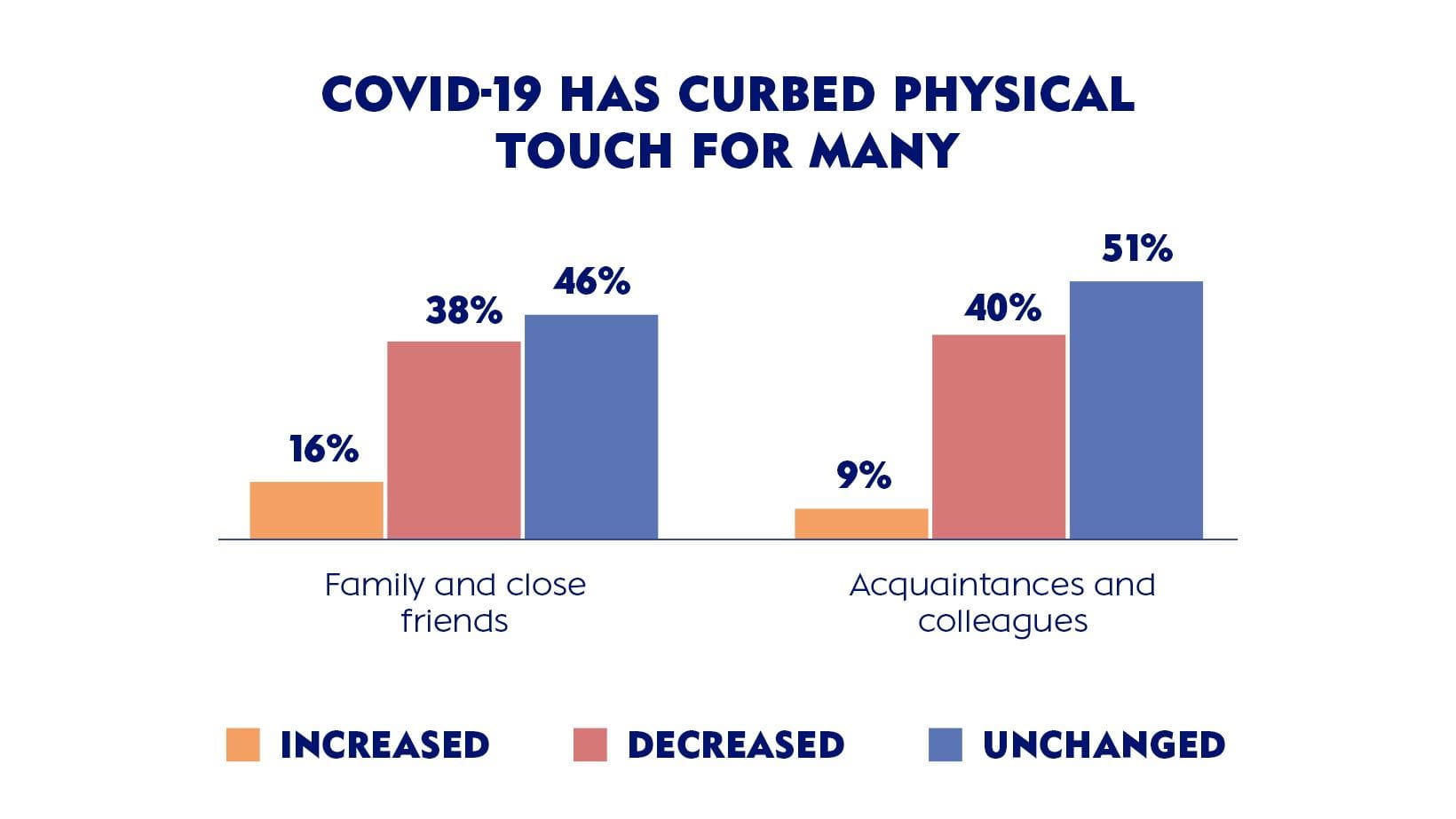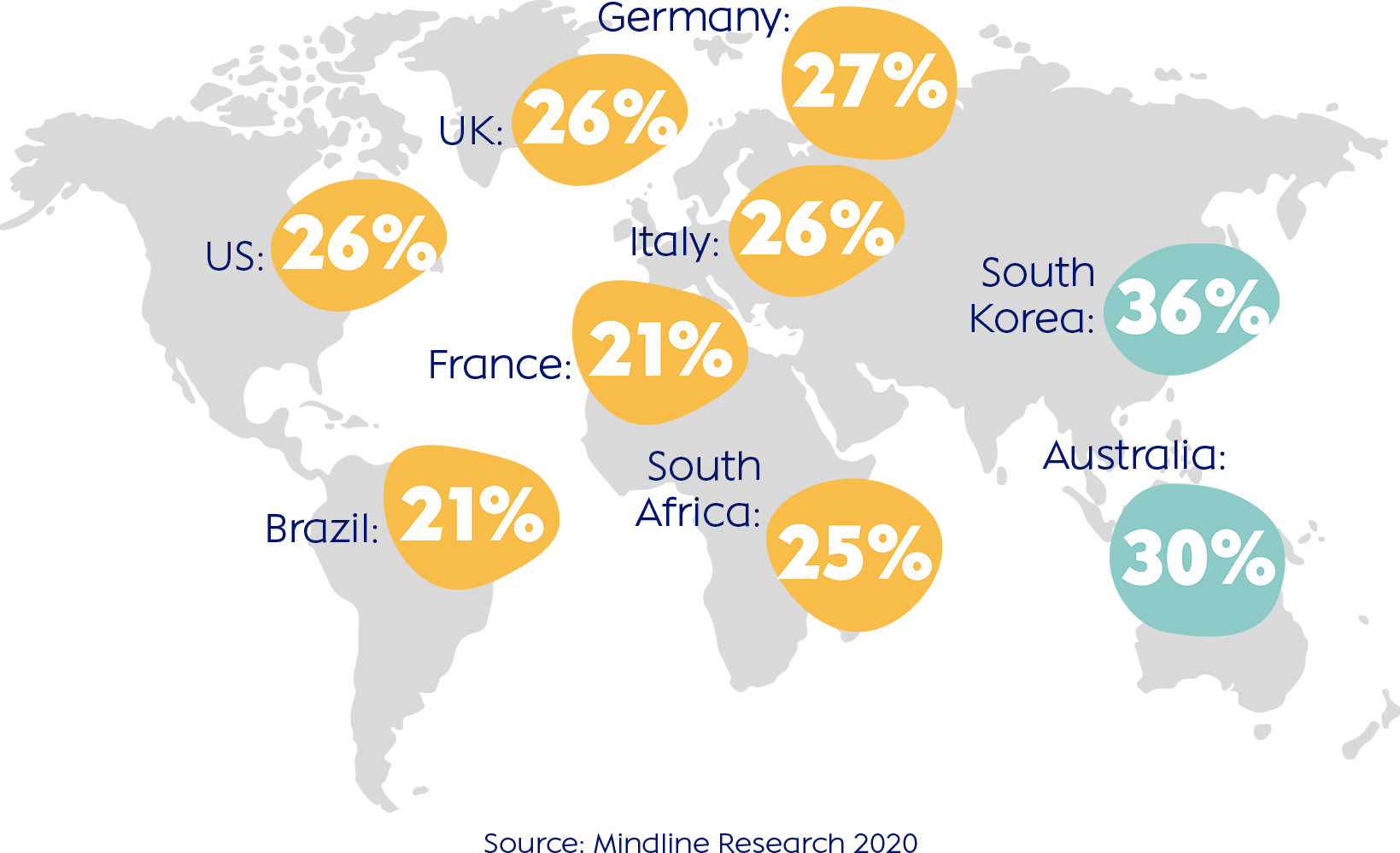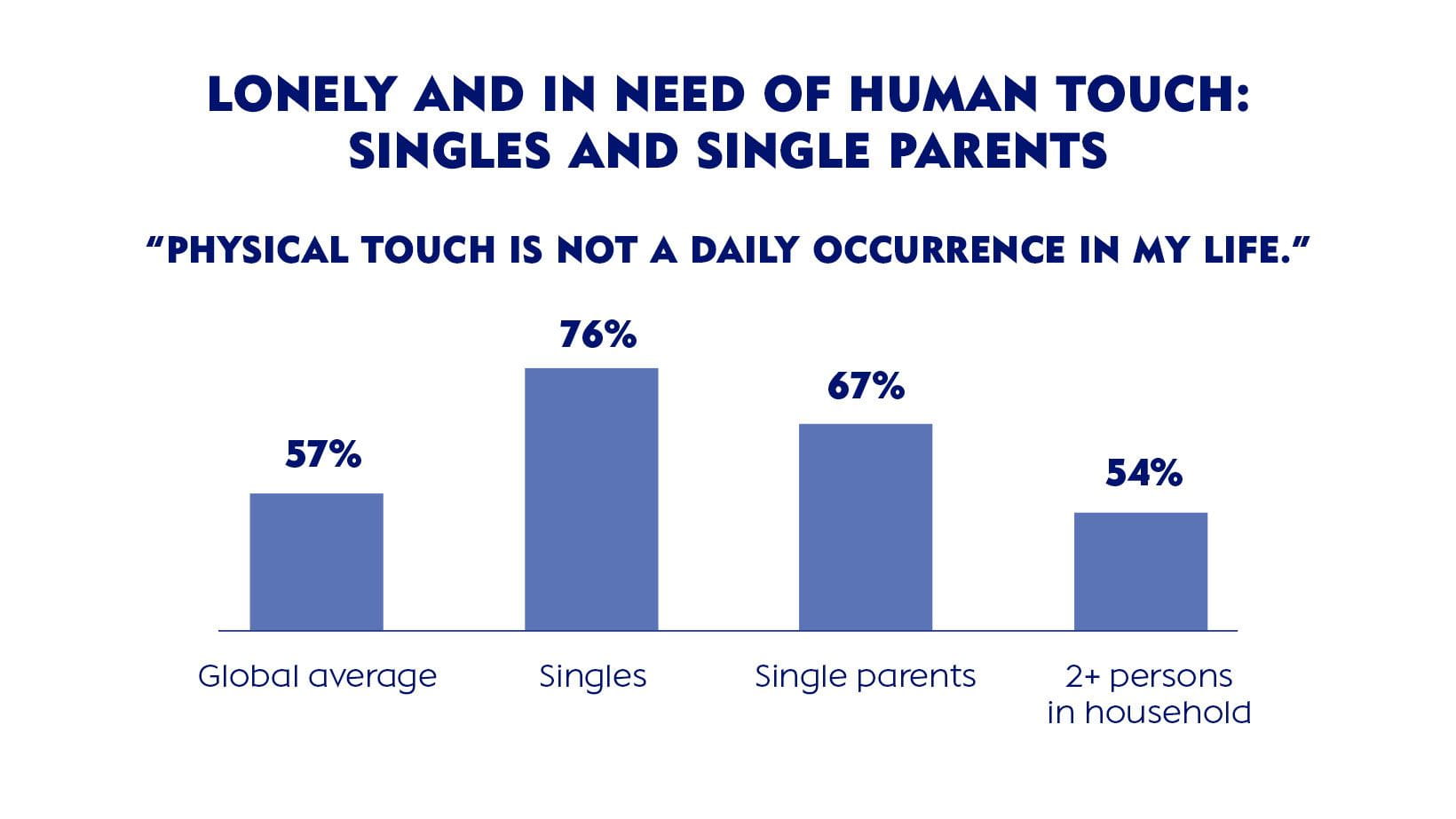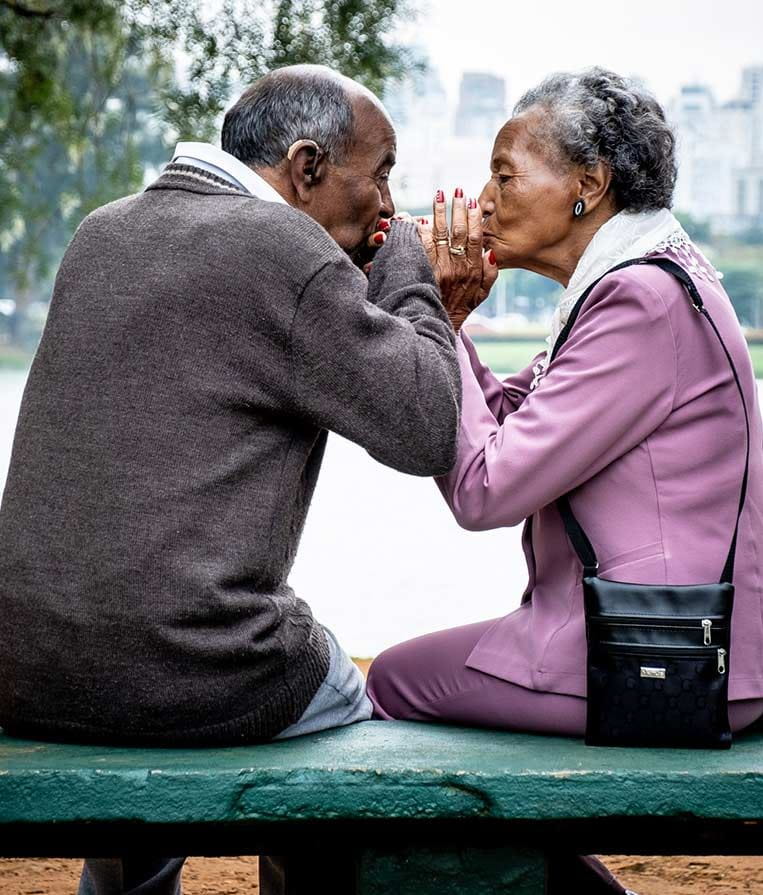
Human touch in a pandemic world. Impact and Interventions.
The COVID-19 pandemic has radically altered our lives in ways both large and small, affecting everything from the way we work, attend school, socialize, and even shop for basic necessities. Of all these changes, perhaps no area of our lives has been affected more than the way that we relate to others.
"Three out of four respondents said that isolation has made them realize how important physical touch is for health."
"More than two-thirds of respondents said that there were more barriers to touch today compared to a year ago."
"The forced isolation has made one out of two people around the world feel lonely."
Lonely people report a hug deficit
Rates of approval among those who feel lonely vs. who do not feel lonely:
“I often wish I could get more hugs from others.”
“I often wish I could get more hugs from others.”
Lonely people
Living in countries with less physical touch
Singles and single parents
People aged 50-69
Teenagers
"Every third person said that the current level of human touch in daily life is too low."
"In the future we won’t take those moments of connection for granted."
About the Study
The NIVEA research was conducted by mindline, an independent research institute, as an online survey of 11,706 people in the following 9 countries (approximately 1,000 respondents per country): Australia, Brazil, France, Germany, Italy, South Africa, South Korea, the UK, and the US. Survey respondents were between 16 – 69 years of age, and were a representative sample based on gender, age, region, and occupational status. The database for this study is from April (week 17) until August (week 32) 2020, the European field work will continue until October.













